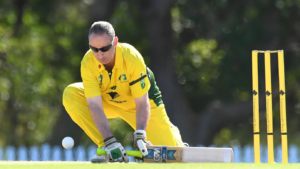Blind cricket stands out as a testament to the adaptability and resilience of athletes with visual impairments. The physical demands of this unique sport, coupled with the need for the specialised training, underscore the exceptional capabilities of blind cricketers. To participate competitively in the sport, athletes must navigate a field where traditional visual stimuli are absent, and instead rely on finely tuned spatial awareness, and elite auditory coordination.
One key physical demand of blind cricket is the reliance on sound. To guide athletes, the ball is equipped with bearings inside it to create a distinct noise, allowing bowlers, fielders, and batsman to identify ball location. For batsmen, the ability to use sound as a means for determining ball speed and direction, and quickly react to produce the best shot is a skill which can be trained and practiced. Split-second decision making and reflexes drive successful batting performances, therefore, developing this skill in game specific scenarios is very important.
Spatial awareness is the other crucial element. Blind cricketers need to master the art of navigating the field, determining ball position and direction of travel, and position themselves strategically using only audible cues. This is where a strong sense of proprioception (the ability to determine the body’s position in a space) is ideal. Being able to set your position, whether it’s batting or fielding, in a way that allows the most optimal interaction with the ball is incredibly difficult with sound cues alone. However, with repetition and practice in specific scenarios can guide athletes to develop this skill.
Moreover, the ability for blind cricketers to use sensory feedback as a measure of success is key to improving cricket specific skills. Direction of balls thrown/bowled, and direction of ball path off the bat can all be determined based on the biomechanical feedback of the bowling and batting actions. Early or late release of the ball will result in a shot/throw that moves towards the right or left of the target respectively. Having athletes understand what these miscues feel like and know how to avoid them is critical for the motor learning phases.
Combining all these factors togethers gives a sport which is incredibly difficult to master, but very rewarding for those who undertake the challenge. For a sport which is so reliant on visual cues, to adapt to use audio and sensory stimuli is very impressive, especially once you appreciate the demands that the athletes must take on board.




